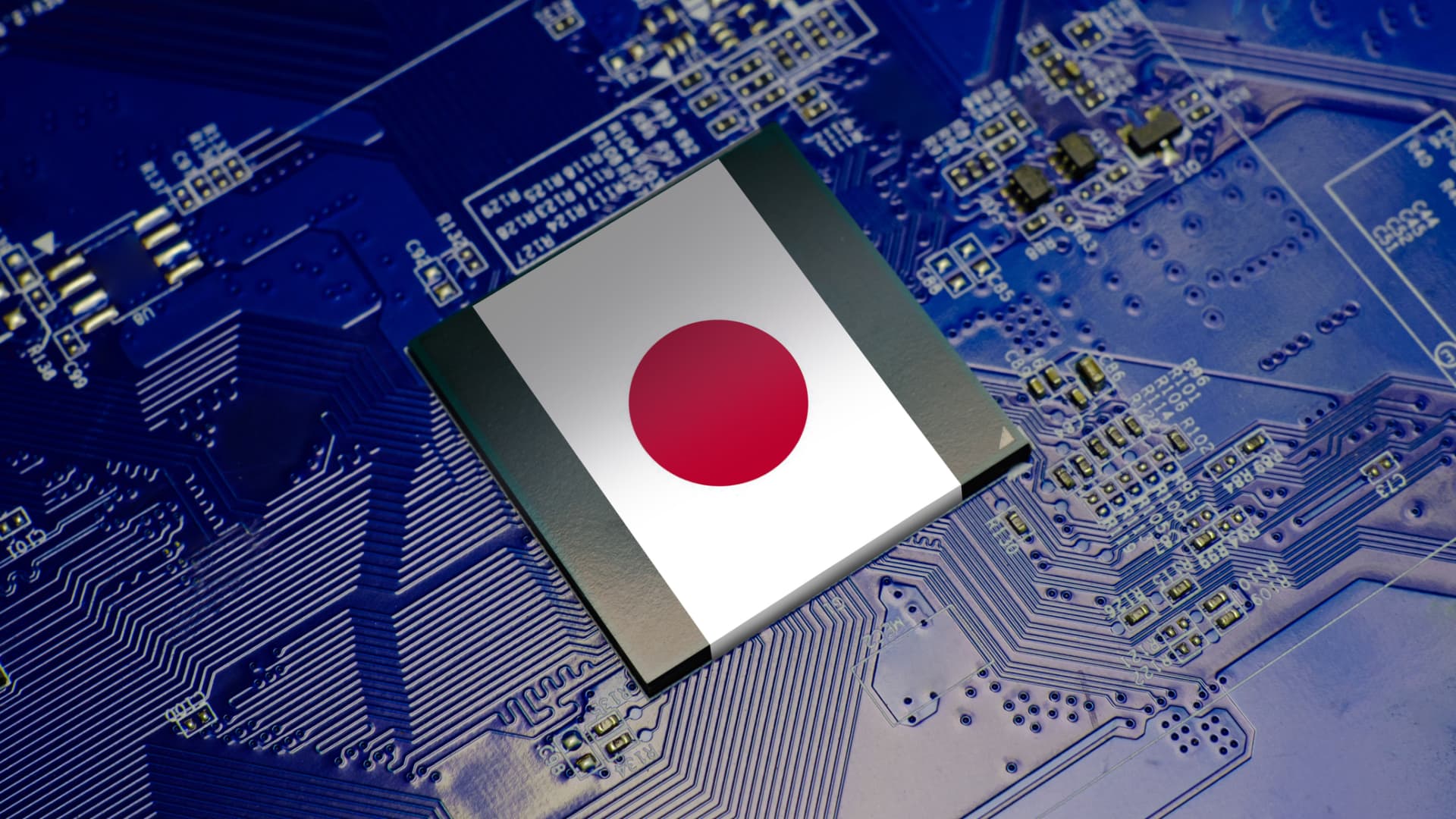Japan is looking to revitalize its semiconductor industry. The Japanese government has unlocked billions of dollars in subsidies for its domestic chip sector.
Thicha Studio | Istock | Getty Images
Japan has announced a new plan to revitalize the country’s semiconductor and artificial intelligence industries as it works to regain its chip leadership.
The proposal will provide support worth 10 trillion yen ($65 billion) or more by fiscal 2030, Prime Minister Shigeru Ishiba said earlier this week.
“We will formulate a new assistance framework to attract more than 50 trillion yen in public and private investment over the next 10 years,” Ishiba said, adding it would be part of broader “revitalization” efforts in Japan.
The plan will be part of a comprehensive economic package to be finalized in November and will be financed through subsidies, government institution investments and debt guarantees, according to local media.
The move comes amid broader efforts by Japan to bolster and diversify its semiconductor supply chain, with the government aiming to triple sales of domestically produced chips to more than 15 trillion yen by 2030.
Domestic chip hero?
One likely beneficiary of the funding announced Monday will be Japan-based Rapidus, a state-backed chip venture at the heart of the country’s chip revitalization efforts.
Founded in 2022 by the Japanese government, Rapidus has backing from a host of Japanese firms— including Toyota Motor and the Sony Group — and is collaborating with U.S. tech giant IBM.
The company has already received over $2 billion in government support as it aims to mass-produce cutting-edge 2-nanometer logic chips by 2027.
Logic chips are used to process information and complete tasks within electronic devices. The most advanced logic chips are used in technologies such as artificial intelligence, quantum computing and machine learning.
Rapidus chairman Tetsuro Higashi has reportedly called the company Japan’s “last opportunity” to regain a leading semiconductor position on the global stage as it looks to catch up with leaders like Taiwan and South Korea.
In the 1980s, Japan was the world’s dominant chip player and occupied more than half of the global semiconductor market.
However, the country began losing its leading edge with the emergence of foreign competitors like Taiwan Semiconductor Manufacturing Co., now the world’s dominant contract chip manufacturer, and South Korea’s Samsung.
Both Samsung and TSMC have laid out plans to begin commercial production of 2-nanometer chips by 2025.
Meanwhile, the U.S. has become a key player in chip design, with companies like Intel and Micron, while the Netherlands makes the world’s most advanced chip-making equipment through its company ASML.
Feasibility
Though it has lost its leadership in semiconductor production and manufacturing, Japan remains a leader in certain semiconductor materials and equipment, Michael Yang, senior director of semiconductors at analyst and consulting firm Omdia, told CNBC.
Through its chip subsidies, which have mostly been geared toward increasing manufacturing capacity, the country should be able to expand into other aspects of the supply and enhance its position, Yang added.
Still, regaining the chip market will be an uphill battle for Japan and will require Rapidus to find a “shortcut” in chip design and production to reach the level of advancement of leading semiconductor companies, said Brady Wang, semiconductor analyst at Counterpoint Research.
Rapidus representatives have said that the architecture of the 2-nanometer chip is different from that of 3-nanometer ones, making mass production of the former a “blank-slate challenge for all players,” and presenting a prime opportunity to break into the market.
However, in this endeavor, “subsidies are a must-have, but cannot guarantee their success,” Wang said, adding that it took TSMC over a decade to catch up to global chip firms and build relationships with customers.
“Subsidies are only a basic requirement for entering the semiconductor industry, but success requires more supportive measures, such as talent, technology, and strategic planning,” said Ken Kuo, senior research vice president at tech market intelligence firm TrendForce.
Learning from the best
In addition to trying to establish a dominant chip producer in Japan, subsidies have also been aimed at attracting the global leaders that once took its chip business.
With aid from the Japanese government, chipmakers such as TSMC, Samsung Electronics, and Intel Corp have agreed to invest billions of dollars into Japan.
Such companies are leaders in producing memory chips used to store data, which are essential in data centers used for AI and cloud computing.
TSMC has already announced plans to build a second fabrication plant in Japan ahead of the completion of its first.
According to Counterpoint’s Wang, attracting such companies entering Japan can help the country quickly boost vertical integration across the supply chain and more quickly build up its semiconductor ecosystem.
Japan has also signed collaboration agreements — with allies such as the U.S., the U.K., Taiwan and a number of EU countries — that are aimed at advancing research and development involving next-generation semiconductors.
— CNBC’s Arjun Kharpal contributed to this report







